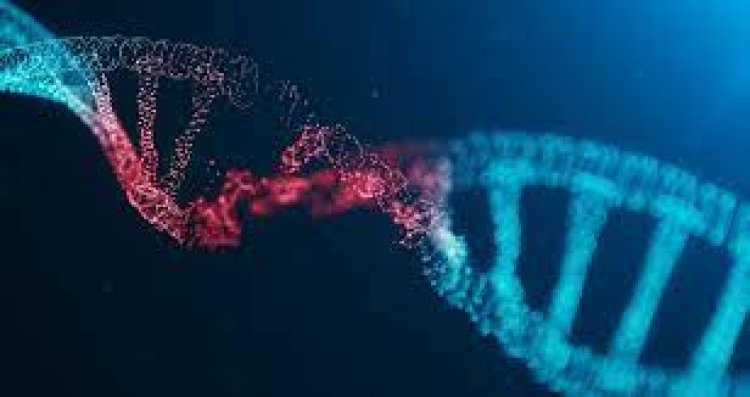Research: Enzymes could be key to understanding how DNA mutates

Surrey, UK: According to recent research from the University of Surrey, enzymes, which are essential for regulating how cells multiply in the human body, could be the very component that causes DNA to spontaneously mutate, leading to possibly permanent genetic mistakes.
Researchers from Surrey's Quantum Biology Doctoral Training Centre discovered that the portion of the process by which DNA repeats itself proceeds at rates 100 times quicker than previously estimated using cutting-edge quantum chemistry calculations. The presumption that quantum effects wouldn't endure long enough to be affected by the replication process is clarified by this finding.
Max Winokan, a co-author of the study from the University of Surrey, said, "We always thought that quantum mechanics would suffer in a biological environment. However, it was fascinating to find that the mutations caused by quantum tunnelling are more stable due to the action of the enzyme, helicase.
"While others have painted helicase as a gatekeeper to quantum mutation, our research suggests that the enzyme is deeply intertwined with the formation of these mutations."
The pairing laws between the genetic letters on opposing strands and DNA's amazing stability are both a result of its well-known double helix shape.
Due to the varying structures of these biomolecules and the various numbers of hydrogen bonds established between these base pairs, A typically always attaches to T, while G always binds to C. Occasionally, the protons (hydrogen atom nuclei) forming these bonds move across them to create the uncommon states known as tautomers.
DNA replication, which is required for a cell to start replicating itself, starts with the two DNA strands being divided so that each can serve as a template for new DNA. An enzyme known as a "helicase," which binds to one of the DNA strands and pulls it through itself to force the DNA apart, is what makes it possible for the strands to separate. To have a possibility of resulting in irreversible genetic mistakes, potential mutant DNA bases must endure this process.
Prior to now, it was believed that the helicase action was too slow. Since the strands are separated, any unintentional point mutation would have made its way back to its natural and more stable position. The latest findings begin to explain how quantum mechanical phenomena might hold the key to understanding genetic mutations and the numerous negative effects they have on Earth's ecosystem. This new study also discovers that such a mechanical separation stabilises DNA mutations.
Dr Marco Sacchi from the University of Surrey, who leads the computational work for this study, said, "There is little understanding of the role of quantum effects in DNA damage and genetic mutations. We believe that we can shed light on the elusive mechanism at the origin of DNA errors only by integrating quantum physics and computational chemistry."
Professor Jim Al-Khalili, Co-Director of the Quantum Biology Doctoral Training Centre at the University of Surrey, said, "What I find most exciting is that this work brings together cutting-edge research across disciplines: physics, chemistry and biology, to answer one of the most intriguing questions in science today, and the University of Surrey is fast becoming a world leader in this field where exciting results are emerging."















































